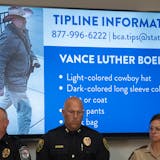For more than two decades in many roles at the Minnesota Health Department, Kris Ehresmann has been preparing for a devastating pandemic.
As a member of the infectious disease division and now its leader, she has helped the state agency respond to outbreaks that claimed many lives worldwide — swine flu, SARS and MERS, as well as two coronaviruses.
But in February, Ehresmann immediately recognized that COVID-19, another new coronavirus, would likely require the type of public health response that hadn't been mounted in 100 years.
"We certainly have been talking about this forever," she said recently. "I realized it was going to be different, but I don't think I fully comprehended how different it would be."
Ehresmann is among a core group advising Gov. Tim Walz on the state's response to the insidious virus, which has fundamentally altered the social and economic fabric of Minnesota since it was first detected here in early March.
Although COVID-19 ebbed somewhat during June, Ehresmann is concerned about the increase in cases among younger adults.
"This disease continues to surprise us in unfortunate ways," she said. "It is a stark reminder that COVID-19 is not only a disease of old age."
The new coronavirus could also be setting the stage for other public health setbacks, she has warned. With fewer children receiving vaccines, there could be a spike in preventable diseases. And emergency room use is also down, including for heart attacks and strokes — a sign that people are not seeking care.


